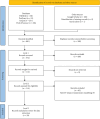Scoping Review of Japanese Encephalitis Virus Transmission Models
- PMID: 40302735
- PMCID: PMC12016872
- DOI: 10.1155/tbed/9880670
Scoping Review of Japanese Encephalitis Virus Transmission Models
Abstract
Japanese encephalitis virus (JEV) causes ~100,000 clinical cases and 25,000 deaths annually worldwide, mainly in Southeast Asia and the Western Pacific and mostly in children. JEV is transmitted to humans through the bite of mosquitoes that have fed on competent hosts. Abiotic factors, such as seasonal rainfall, influence transmission. Transmission models have an important role in understanding disease dynamics and developing prevention and control strategies to limit the impact of infectious diseases. Our goal was to investigate how transmission models capture JEV infection dynamics and their role in predicting and controlling infection. This was achieved by identifying published JEV transmission models, describing their features and identifying their limitations, to guide future modelling. A Preferred Reporting Items for Systematic Reviews and Meta-Analyses Extension for Scoping Reviews (PRISMA-ScR)-guided scoping review of peer-reviewed JEV transmission models was conducted. Databases searched included PubMed, ProQuest, Scopus, Web of Science and Google Scholar. Of the 881 full-text papers available in English, 29 were eligible for data extraction. Publication year ranged from 1975 to 2023. The median number of host populations represented in each model was 3 (range: 1-8; usually humans, mosquitoes and pigs). Most (72% [n = 21]) models were deterministic, using ordinary differential equations to describe transmission. Ten models were applied (representing a real JEV transmission setting) and validated with field data, while the remaining 19 models were theoretical. In the applied models, data from only a small proportion of countries in Southeast Asia and the Western Pacific were used. Limitations included gaps in knowledge of local JEV epidemiology, vector attributes and the impact of prevention and control strategies, along with a lack of model validation with field data. The lack and limitations of models highlight that further research to understand JEV epidemiology is needed and that there is opportunity to develop and implement applied models to improve control strategies for at-risk populations of animals and humans.
Copyright © 2025 Troy A. Laidlow et al. Transboundary and Emerging Diseases published by John Wiley & Sons Ltd.
Conflict of interest statement
The authors declare no conflicts of interest.
Figures



References
-
- Moore S. M. The Current Burden of Japanese Encephalitis and the Estimated Impacts of Vaccination: Combining Estimates of the Spatial Distribution and Transmission Intensity of a Zoonotic Pathogen. PLoS Neglected Tropical Diseases . 2021;15(10) doi: 10.1371/journal.pntd.0009385.e0009385 - DOI - PMC - PubMed
Publication types
MeSH terms
LinkOut - more resources
Full Text Sources

